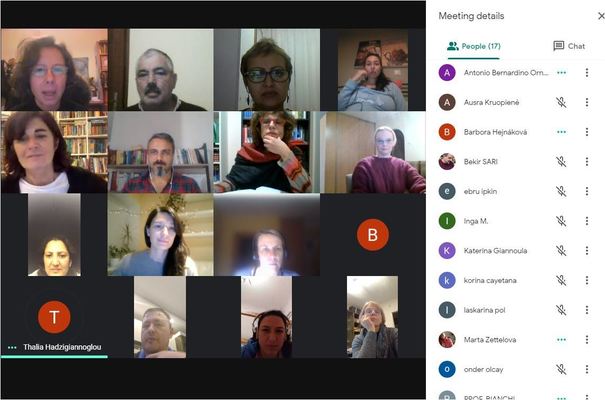 At our first meeting on November 6, 2020
At our first meeting on November 6, 2020
we discussed the following questions:
How did the terms “Suggestology” and “Suggestopaedia”
come about?
Suggestopedia is the application of Suggestology in education. Suggestology is the science of communicative (VS clinical) suggestion as it occurs in various verbal/non-verbal, conscious/unconscious ways.
How (if at all) is Suggestopaedia related to Hypnopaedia?
Before ever considering implementing suggestion in the teaching/learning process, Dr. Lozanov was a psychiatrist and psychotherapist experimenting on the role of suggestion in Psychotherapy. Back in those days (the early 1970s) clinical suggestion was still very popular and was applied in combination with hypnosis. However, Dr Lozanov was one of the first Soviet- block scientists to abolish hypnosis from his clinical practice and launch experiments on the effects of wakeful suggestion or ‘tender’ suggestion, as he named it. He was totally against the idea of manipulating his patients even in medical practice. Of course, he stressed the role of relaxation in learning and memory but described it as ‘concentrative psycho relaxation’ which can be induced with the aid of classical and pre classical music and corresponds to a mental state at which the brain functions at frequencies ranging from Alpha to Theta Waves. Hypnosis was never applied in the suggestopedic process.
How did Dr Lozanov come up with the term “Reservopaedia”?
While still at his clinical practice as a psychiatrist, Dr Lozanov started observing phenomena of extraordinary performances among his patients exposed to his ‘wakeful’ suggestion technique. Not only were they cured from mental disorders and psychosomatic diseases but they could also learn new material three to five times faster without any fatigue and with increased creativity. That was when he decided to investigate the role of suggestion in liberating the human ‘reserve capacities’ by applying clinical suggestion first and later by orchestrating the stimuli in the learning environment in a suggestopedic way and establishing his theory that suggestion can be controlled to enhance the development of personality and its reserve complex.
How could Dr Lozanov claim to have discovered a way of untapping the reserve capacities of his patients?
The early experiments focused on Hypermnesia and the tools used to measure increased memorisation and the length of time it lasted for were lists of 1.000 isolated words in foreign languages which the subjects in his research were totally unfamiliar with and were exposed to just for one day within a session of three hours. It was consistently confirmed that the suggestive presentation of the huge volume of new material led to its memorisation by over 85% of the words for a period longer than three years. At the same time, other by-products of suggestive stimulation were systematically observed such as spontaneous healing from diseases, lack of tension and fatigue and long-lasting increase in motivation to learn and get engaged in creative and cooperative activities.
What is the role of the art in suggestopedic training?
When Dr Evelina Gateva started collaborating with Dr Lozanov at the Research Institute of Suggestology and the Development of the Personality in Sofia, she introduced ‘suggestopedic’ art as the primary means of communicative suggestion which proved to bring about the same mental and physical benefits and was actually a purely pedagogical process that could be applied in education.
What can be taught/learnt this way?
There were 121 experimental schools in Sofia and 4 in Austria (Vienna and Linz) at which Suggestopaedia was fully implemented to teach all subjects in an integrated way - what we would describe today as cross-curricular teaching or CLIL involving all subjects at all levels of education. Later, there were successful attempts to apply Suggestopaedia at Universities around the world in various subjects. Dr Lozanov encouraged teachers of all faculties to cooperate and develop syllabi for suggestopedic courses across the curriculum.
Why has this innovative approach not
become better known and more widely applied?
Despite its recognition by the UNESCO experts in education in 1978 as one of the most effective methodologies for combating illiteracy and transforming education, Suggestopaedia has remained in isolation due to the complex political circumstances that prevented its founders to disseminate it properly outside Bulgaria. What’s worse, it has suffered a lot of distortions by several untrained or poorly trained teachers. Now, a decade after Dr Lozanov’s death, it still awaits its demystification and juxtaposition to other innovative approaches to teaching and learning.
Which age groups is Suggestopaedia suitable for?
The playful atmosphere which contributes to the suggestive environment reminds the observer of kindergarten learning. This is exactly what Dr Lozanov aimed at creating; the conditions for infantilisation which is conducive to the liberation of the personality from the inhibitions to learning due to the social suggestive norm. Therefore, it is not only children of all ages but adults and elderly learners that benefit from suggestopedic training - of course, with respect to the principle of ‘fading scaffolding’ (Leo Brunner), i.e. the childlike approach fades to make way for more adult like treatment as learners begin to master the material taught. It is not the manipulation but the liberation of the personality and its emancipation from the teacher that Dr Lozanov has always envisioned.